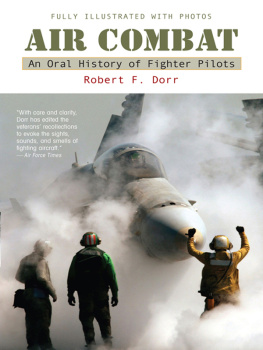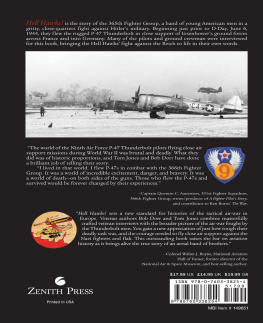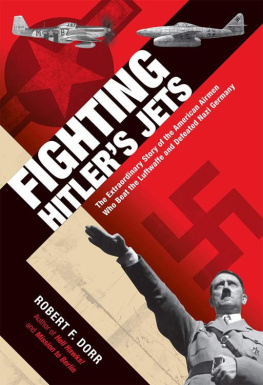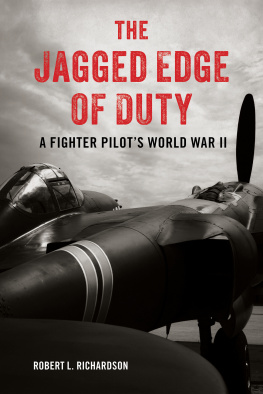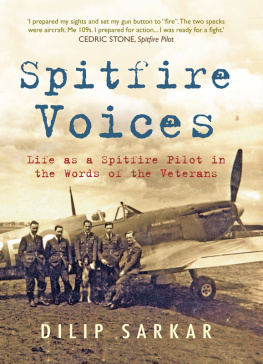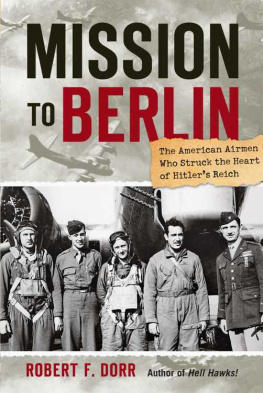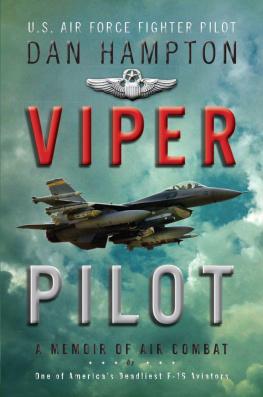AIR COMBAT
An Oral History of Fighter Pilots
Air Combat
Robert F. Dorr

CALIBER BOOKS, NEW YORK
THE BERKLEY PUBLISHING GROUP
Published by the Penguin Group
Penguin Group (USA) Inc.
375 Hudson Street, New York, New York 10014, USA
Penguin Group (Canada), 90 Eglinton Avenue East, Suite 700, Toronto, Ontario M4P 2Y3, Canada (a division of Pearson Penguin Canada Inc.)
Penguin Books Ltd., 80 Strand, London WC2R 0RL, England
Penguin Group Ireland, 25 St. Stephens Green, Dublin 2, Ireland (a division of Penguin Books Ltd.)
Penguin Group (Australia), 250 Camberwell Road, Camberwell, Victoria 3124, Australia (a division of Pearson Australia Group Pty. Ltd.)
Penguin Books India Pvt. Ltd., 11 Community Centre, Panchsheel Park, New Delhi110 017, India
Penguin Group (NZ), 67 Apollo Drive, Rosedale, North Shore 0632, New Zealand (a division of Pearson New Zealand Ltd.)
Penguin Books (South Africa) (Pty.) Ltd., 24 Sturdee Avenue, Rosebank, Johannesburg 2196, South Africa
Penguin Books Ltd., Registered Offices: 80 Strand, London WC2R 0RL, England
AIR COMBAT
Copyright 2006 by Bill Fawcett and Associates
Cover design by Steven Ferlauto
Cover photo Reuters / Corbis
All rights reserved.
No part of this book may be reproduced, scanned, or distributed in any printed or electronic form without permission. Please do not participate in or encourage piracy of copyrighted materials in violation of the authors rights. Purchase only authorized editions. BERKLEY CALIBER and its logo are trademarks of Penguin Group (USA) Inc.
ISBN: 978-1-1012-0616-4
Contents
Authors Note
These first-person accounts of American Combat Air pilots in battle are the result of sixty-one interviews and several flights aboard aircraft completed in 2004 and 2005. Any errors are the fault of the author. However, this book would have been impossible without the help of many.
The following Combat Air combat veterans were interviewed for this book:
Roger Ames, Gordon H. Austin, Bill Barron, William A. Bloomer, Eldon Brown, William E. Earl Brown, Capt. John, George Chandler, Eugene P. Deatrick, Karl Dittmer, Rhory Draeger, Dan Druen, Cort Durocher, Arnie Franklin, Thomas C. Gill, Bill Ginn, Kelly Gross, Charles W. Hawley, Thomas L. Tommy Hayes, Hank Hoffman, Eugene Mule Holmberg, Richard Kirkland, Ron Kron, James F. Low, Hamilton Mac McWhorter III, Milt Moore, Joseph J. Jay Morrissey, Albert E. Motley Jr., Curtis C. Nelson, Jerry T. OBrien, Gerald G. ORourke, Leonard Plog, Curtis Richards, Jay A. Stout, Evans G. Stephens, Harley Thompson, Charles Vasiliadis, Wayne Whitten, and Dale Zelko
The following people also provided interviews and assistance for Air Combat :
Bill Eaton, John Gresham, Robert A. Hadley, Timothy R. Keck, Jack Lambert, Forrest L. Marion, Norman Polmar, Roy Potter, and Norman Taylor.
I also want to thank Bill Fawcett and Tom Colgan.
Roger Ames provided his personal account of the P-38 Lightning mission to kill Japans Admiral Yamamoto during a series of interviews in the early 1990s. The best full-length account of that extraordinary mission appears in Lightning Strike: The Secret Mission to Kill Admiral Yamamoto and Avenge Pearl Harbor, by Donald A. Davis (New York: Penguin Press, 2005).
Some veterans interviewed for this volume have written their own books. EF-10B Skyknight veteran Jerry T. OBrien is the author of Top Secret (Anaheim, Calif.: Equidata Publishing Co., 2004), a history of Marine Corps electronic warfare squadrons. F6F Hellcat pilot Hamilton McWhorter III is co-author with Jay A. Stout of The First Hellcat Ace (Pacifica, Calif.: Pacifica Press, 2001).
An excellent biography of Edward H. Butch OHare is Fateful Rendezvous by Steve Ewing and John B. Lundstrom (Annapolis, Md: Naval Institute Press, 1997). This books account of the November 8, 1950, air battle benefited from research provided by Roy Potter, the nephew of Capt. Eldon N. Neil Colby.
Robert F. Dorr
Oakton, Virginia
Chapter One
Peril Above Pearl Harbor
What Happened
At 8:00 A.M . that morning, second lieutenants George Welch and Kenneth Taylorboth new fighter pilotswere awakened at Wheeler Field, Hawaii, by exploding bombs. They raced outdoors and saw smoke rising over Pearl Harbor. Taylor telephoned the grass airstrip at Haleiwa, ten miles from Honolulu, where the 47th Fighter Squadron had been sent for target practice. He told ground crews to have two P-40B Tomahawks fueled and armed for combat. He had reached the site of the only P-40s that were not, at this instant, under Japanese attack.
A little-known sidelight of the Pearl Harbor attack is the air-to-air fighting that went on in the skies of Hawaii on December 7, 1941most of them between P-40B Tomahawks of the Armys 47th Fighter Squadron and Mitsubishi A6M2 Zero fighters of Japans First Air Fleet (1st Koku-Kantai). A tiny handful of Hawaiians actually heard the whine of engines and the chatter of machine guns as Tomahawks and Zeros dueled in the Sunday sky.
At Hickam Field just outside Honolulu, base commander Col. William Farthing said it was only human ingenuity that enabled a few Army pilots to climb aloft and engage the attackers. Farthings boss in the islands was Lt. Gen. Walter C. Short, who expected Japanese sympathizers on Oahu to try to blow up aircraft and equipment. To cope with the anticipated sabotage, Short ordered his Army Air Forces, or AAF, commanders to park P-36s, P-40s, A-20s, and B-18s wingtip-to-wingtip on the flight lines at Hickam, Wheeler, Bellows, and other airfields. At Shorts direction, the islands radar sites operated only part-time and were scheduled to shut down at 7:00 A.M ., fifty-three minutes before the attack. On December 7, Farthing was in the control tower early, awaiting the arrival of a flight of B-17 Flying Fortresses from the mainland scheduled for 0600 hours. They were delayed. Farthing saw the first Japanese aircraft hit ships in the harbor before coming on to strafe the airfield.

Second Lieutenant George Welch December 7, 1941 Curtiss P-40B Tomahawk 47th Fighter Squadron, 15th Fighter Group Wheeler Field, Territory of Hawaii
2nd Lts. Kenneth Taylor (left) and George Welch were among the P-40B Tomahawk pilots of the 47th Fighter Squadron who got into the air near Pearl Harbor on December 7, 1941, and shot down Japanese aircraft.
[U.S. Army]
Farthing was not in the loop when the radar technicians decided they were watching the B-17s. There were, in fact, four B-17Cs and eight B-17Es approaching, just three degrees off the heading of the Japanese warplanes. But 170 torpedo bombers, dive-bombers, and fighters also were arriving over Oahu from six Japanese aircraft carriers.
GORDON AUSTIN. If wed known the Japanese were going to attack us that morning, Id have been in the cockpit of a P-40 and I wouldnt have won a coin toss with my operations officer.
I wasnt at Wheeler Field on the morning of December 7, 1941, because of that coin toss, but others in my squadron got into the air and the P-40 served them well. The truth is, the P-40 we had at Pearl Harbor was a big improvement over what we were accustomed to. I would say it had a damn fine cockpit. Our models had two machine guns in the nose, firing through the prop, and they worked pretty well.
One of those pilots was George Welch. Welch was a fabulous pilot. I never saw Welch drink too much, but he loved to have a cool drink or two. And he really knew how to handle the P-40. But that gets ahead of the story.

